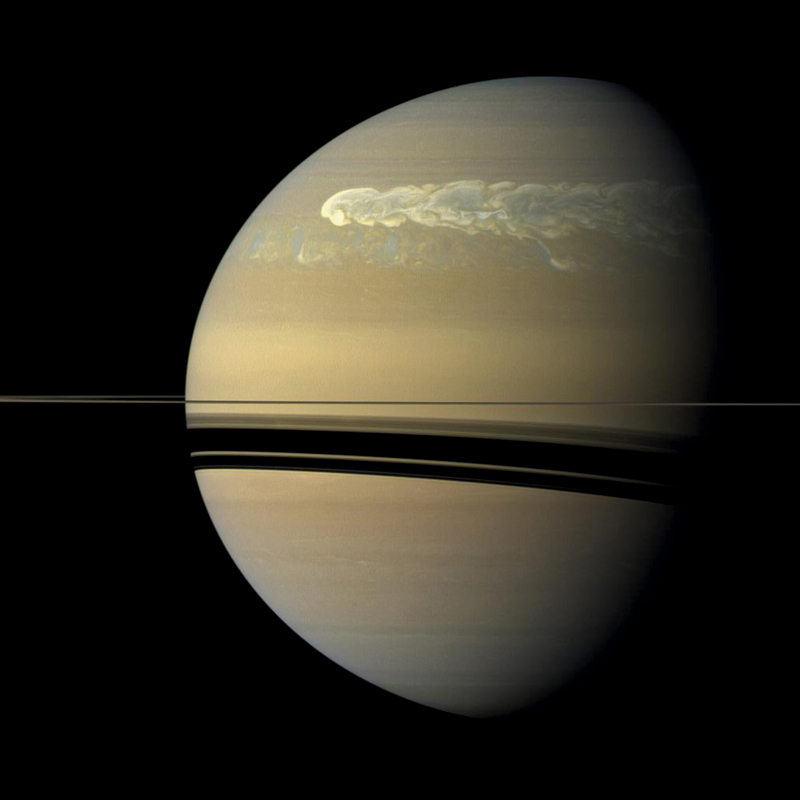
NASA / JPL / Space Science Institute
Saturn photographed by the Cassini space probe in February 2011, 12 weeks after a first mega-hurricane was detectedNASA / JPL / Space Science InstituteThe storms on Saturn are enormous. They resemble Earth’s hurricanes, but they are much, much larger. They occur approximately every 20 to 30 years and leave marks that last for centuries. A group led by Dutch astronomer Imke de Pater of the University of California, Berkeley, who has been studying the phenomena for four decades, used data from a network of radio telescopes known as the Very Large Array (VLA) to look below the cloud layers visible around giant planets. The team of researchers realized that within the storms, ammonia is scarcer at medium altitudes and more concentrated below 100 and 200 kilometers in the atmosphere, which is composed mainly of hydrogen and helium. The most consistent hypothesis to date is that ammonia, a gas composed of nitrogen and hydrogen, is carried to the lower atmosphere through continuous processes of precipitation and evaporation. Experts still don’t know, however, what might cause these storms (Science Advances, August 11).
Republish